Almanac: Show & Tell
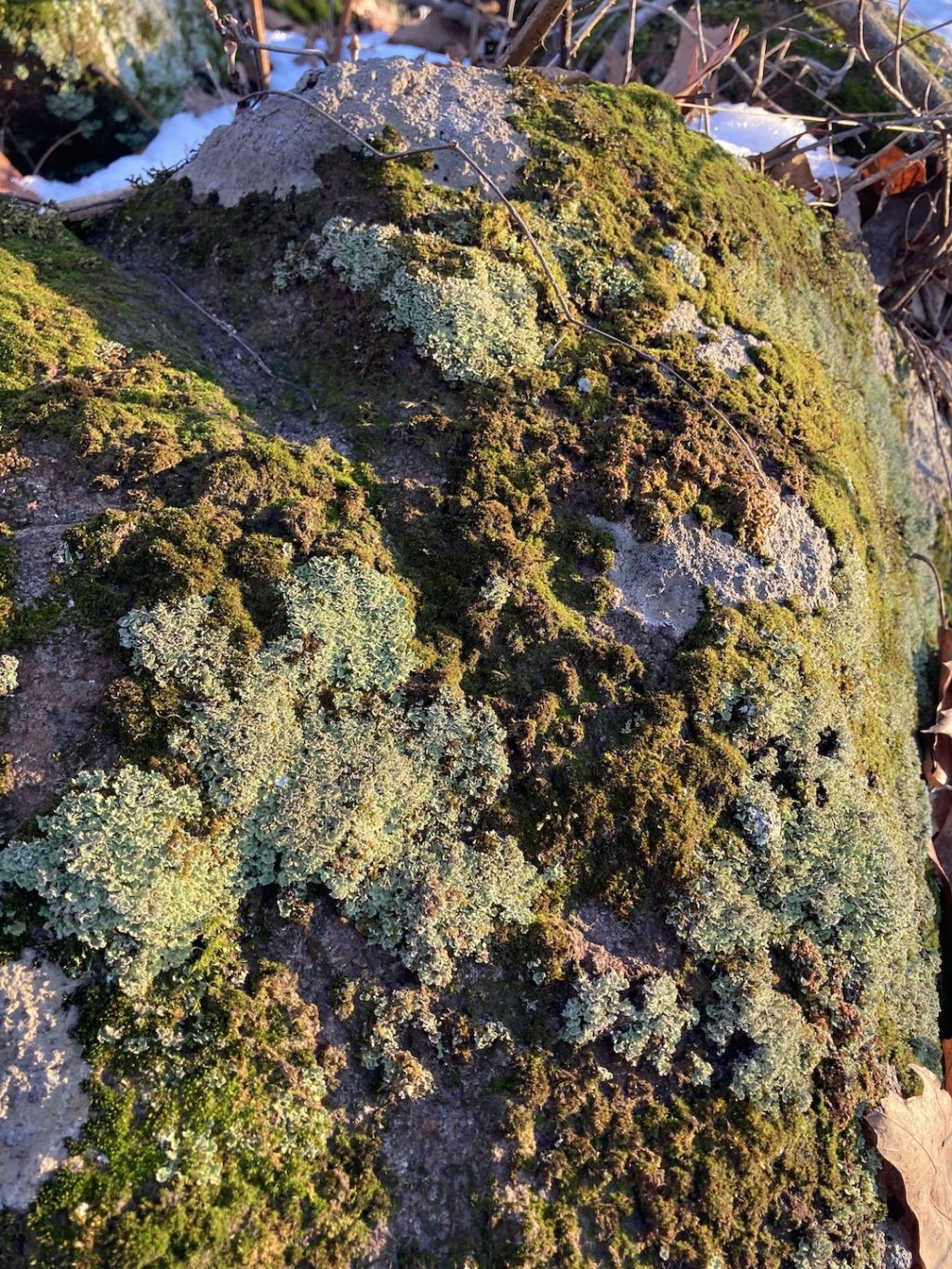
This lovely “garden” of lichen and moss along the New England trail heading up to Mt. Lincoln in Pelham delighted my eyes on an early-January day. Lichen-covered rocks are everywhere, of course, and so is moss of many species. But I don’t often see the two very different life forms cohabitating like this. The beautiful differences in color and texture were cast in high relief by late-afternoon sun. Photo: Stephen Braun
Not everything is column-worthy. Sometimes I come across things on outdoor rambles that are simply cool-looking or interesting in some small-scale way. That’s been the case lately, so I’ve created this new column title that I’ll re-use in the future for times, like now, when I’d like to share sights, such as the lichen and moss “garden” above. None of the images below are meaty enough to warrant an extended treatment, but they caught my eye, so I’m hoping they tickle your fancy too.
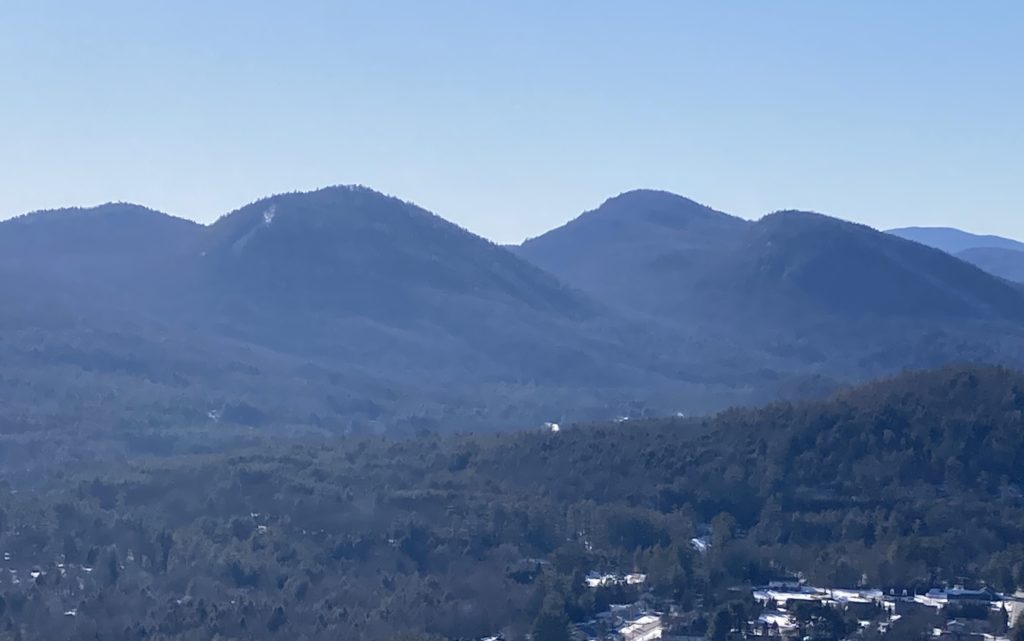
Mt. Hackensck is a steep-sided rocky hill towering over the hamlet of Warrensburgh in the eastern Adirondacks. I climbed it a couple of weeks ago to bring some life into my legs after driving several hours. The view from the top was lovely and included the three mountainous bumps you see here (the left-most bump doesn’t count). I learned that these are known locally as the “Three Sisters.” That intrigued me because I just recently wrote about our local “Seven Sisters.” It made me wonder how many other mountainous sisters there are. I knew about the Three Sisters range in Oregon (and the lovely adjacent town of Sisters), but a little Googling led me to others, including another Seven Sisters in Norway. So many sisters! Where are the brothers? Well, although I had never come across a set of brotherly mountains myself, it turns out that there are probably as many alpine “brothers” in the world as there are “sisters,” including the “Three Brothers” just a little farther north in the Adirondacks from these three sisters. Being blessed with both a brother and a sister myself, I’m happy about this symmetry in the naming of mountainous relatives.
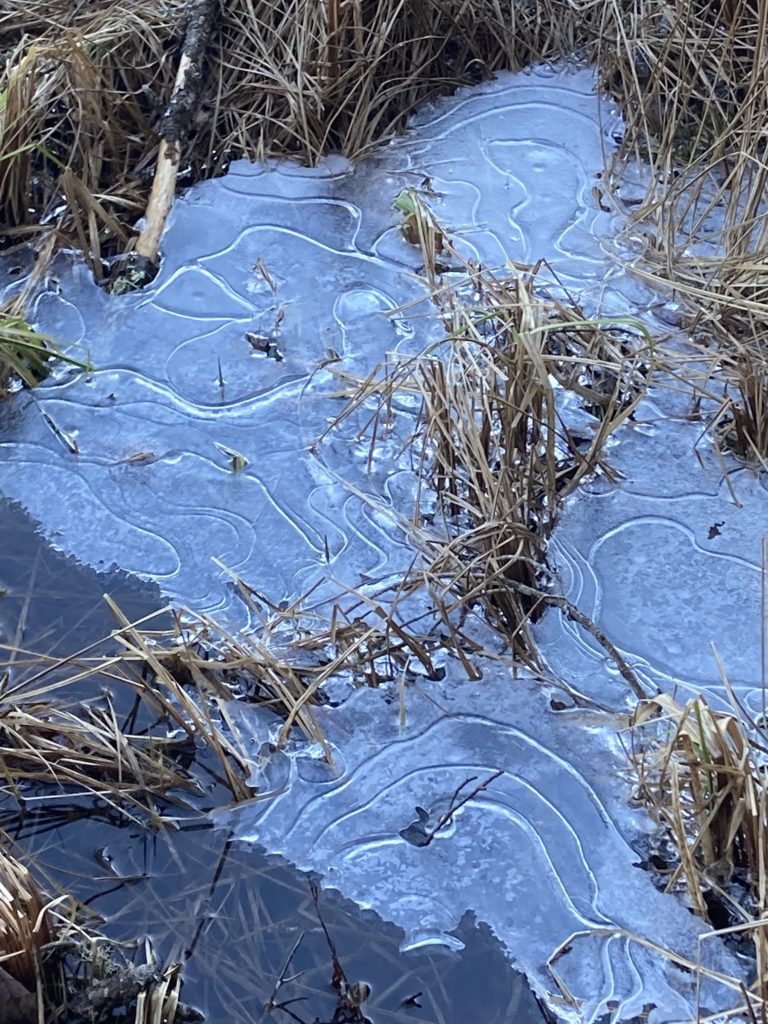
I came across these patterns in paper-thin ice on the shore of a marshy area near Mt. Hackensack. What do you think causes the lines? I have no clue. My best guess is that they result from a cycle of nightly ice growth alternating with either daytime melting or simply daytime stasis in ice growth. Regardless of the physics of their creation, they’re really neat!
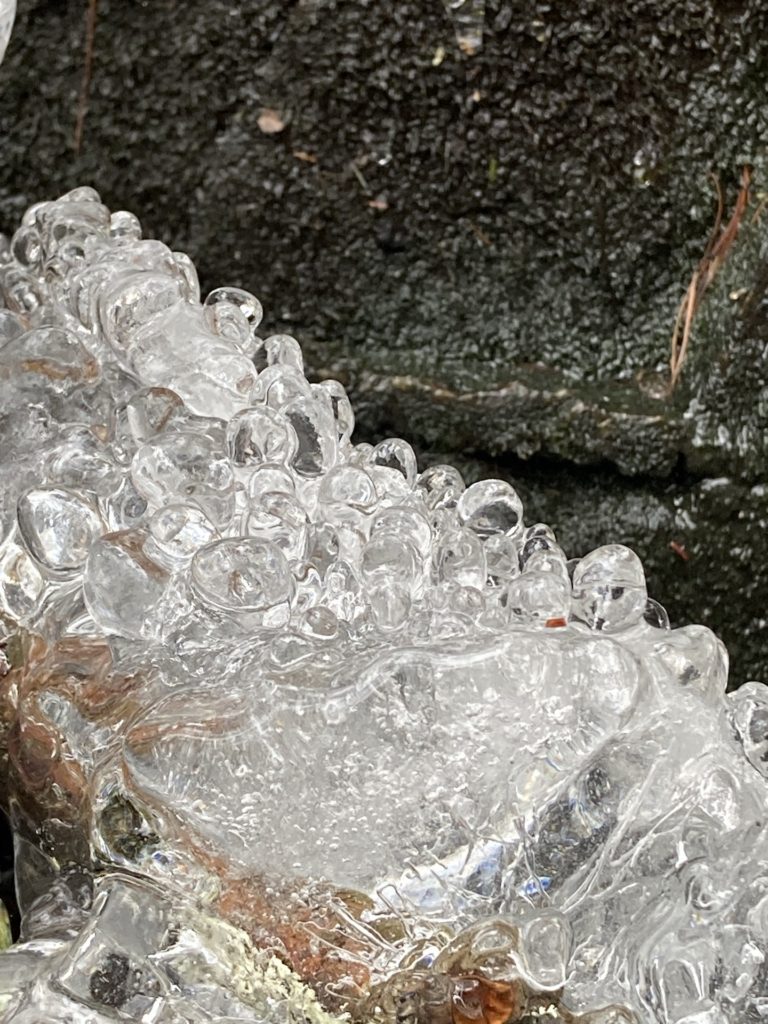
On a recent day that hovered just at the freezing mark, some friends and I hiked up to the set of cascades on Dunlop Brook in Pelham, which was rushing loudly from rain and snowmelt. Near the base of one of the falls I found this array of smooth, bulbous ice bumps, which I’ve not seen before. They must form, somehow, from the spray of the nearby falling water, but why the ice forms these bumps instead of a smooth sheet of ice is a mystery to me. The formation reminds me of similar-looking golf-ball-sized bumps I saw once while caving in Tennessee. Those, however, were stony and formed over centuries from a steady dripping of mineral-rich water.
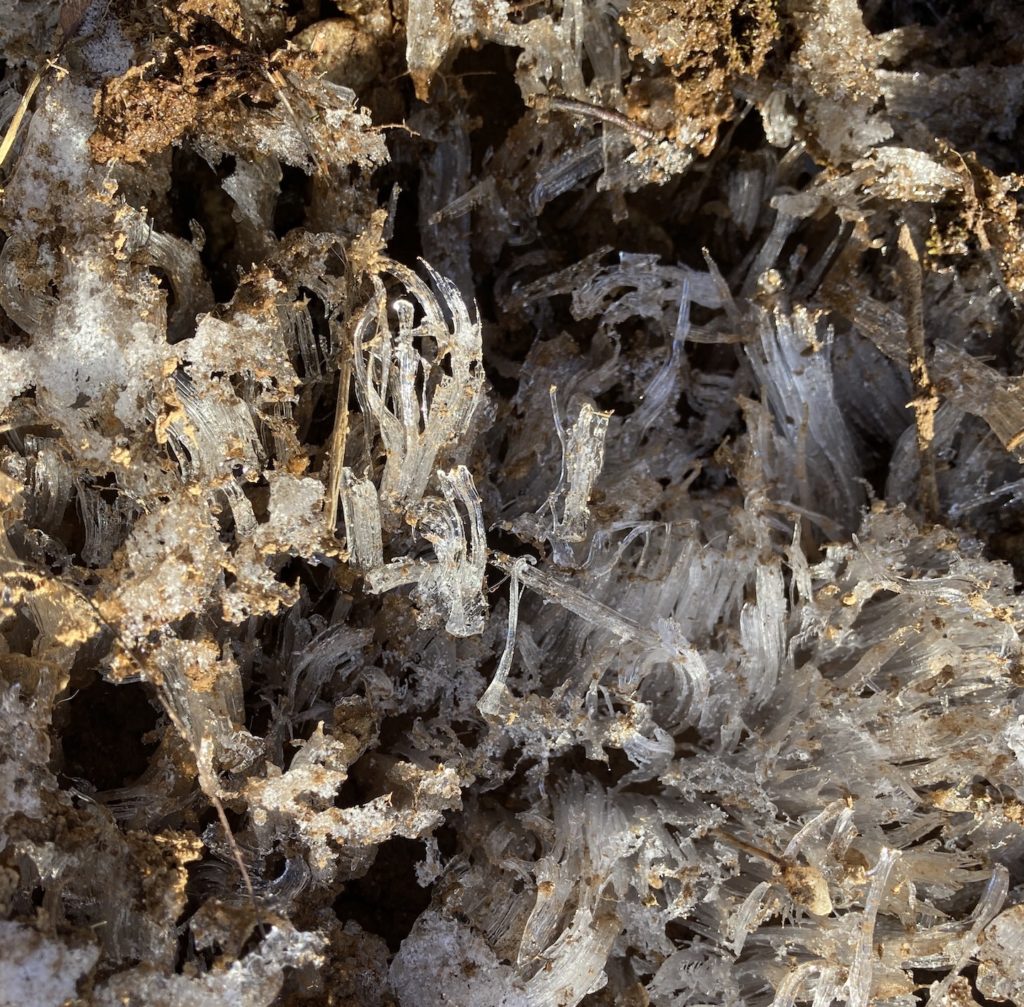
OK, yes…again with the ice! I’m just a sucker for these kinds of things and amazed at the variety of shapes possible when different forces act on what is a very simple molecule. These extremely delicate hair-like extrusions of frozen groundwater are called needle ice. I took this shot on a hike up Mt. Holyoke recently, but I’ve seen a lot of needle ice this winter, probably because we’ve had so little snow and yet cold-enough conditions for these structures to form. Sometimes you feel and hear needle ice before you see it. You’ll be walking along a trail and suddenly your boot hits a soft spot and you hear a distinct crunch. Needle ice sometimes lifts an entire slab of soil or humus as it grows, hiding the fragile pillars beneath.
Well, that’s all I’ve got. If you come across sights on your own rambles about which you’re curious or that you just want to share, send them my way and I’ll include them in the next installment of Almanac Show & Tell!
Almanac is a regular Indy column of observations, musings, and occasional harangues related to the woods, waters, mountains, and skies of the Pioneer Valley. Please feel free to comment on posts and add your own experiences or observations.

Given the author’s given name … and fascination with ice … which I confess to share … especially its mathematical-physics aspects … ’twas hard to resist sharing this link
https://en.wikipedia.org/wiki/Stefan_problem
to the aptly named problem Stephen raises here….
Ah … ahem … gift … to … enjoy … on a cold weekend….